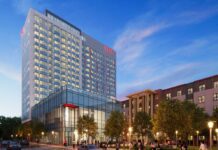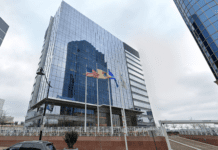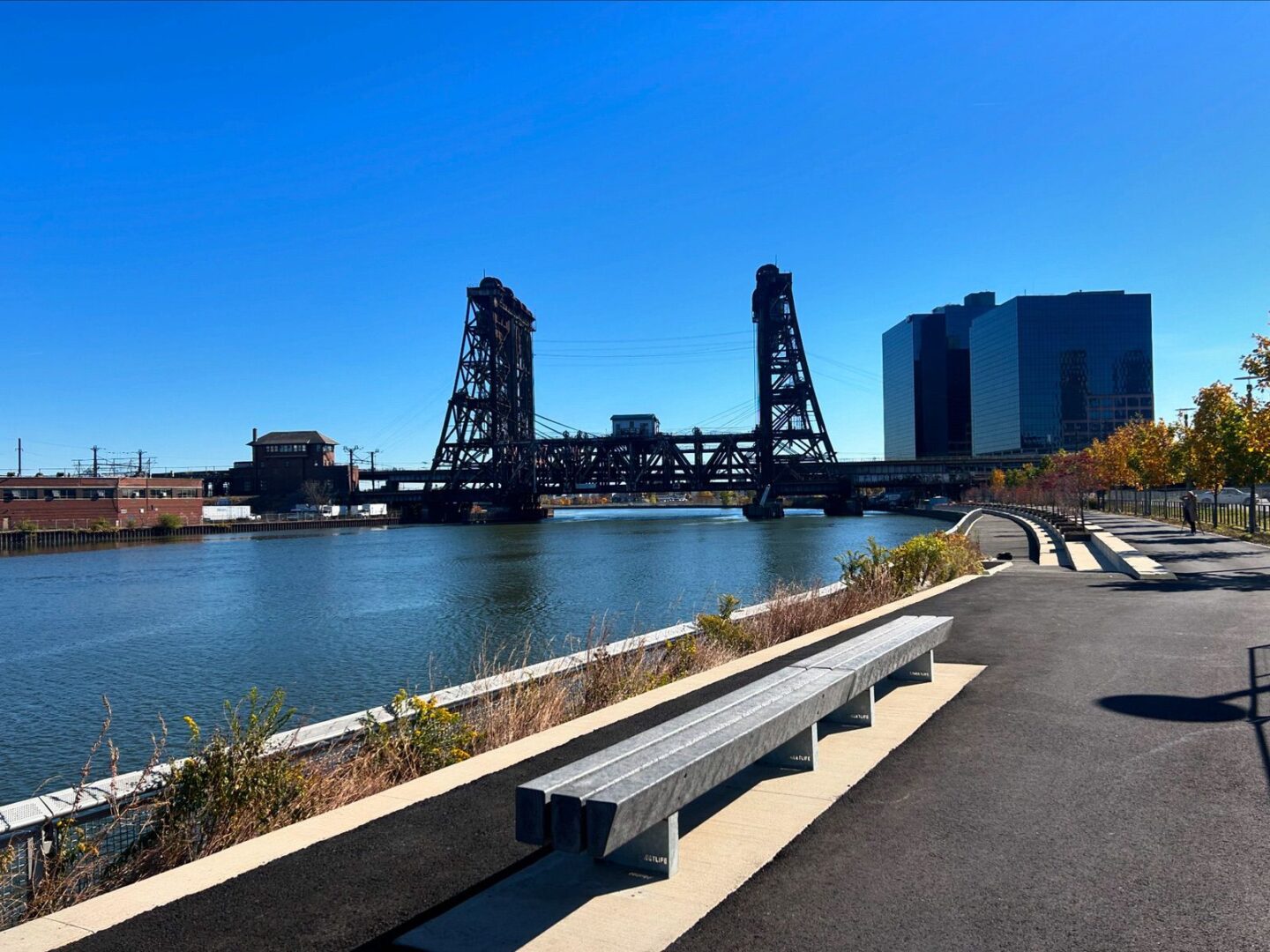
Last week’s ribbon-cutting for Newark’s new Riverfront Park meant so much more to Jerrah Crowder than the opening of a park. It was a measure of the city’s continued growth.
“We’ve come a long way with this,” said Crowder, the city’s deputy director of the department of housing and economic development. “This section of it realizes the growth here in the city of Newark.”
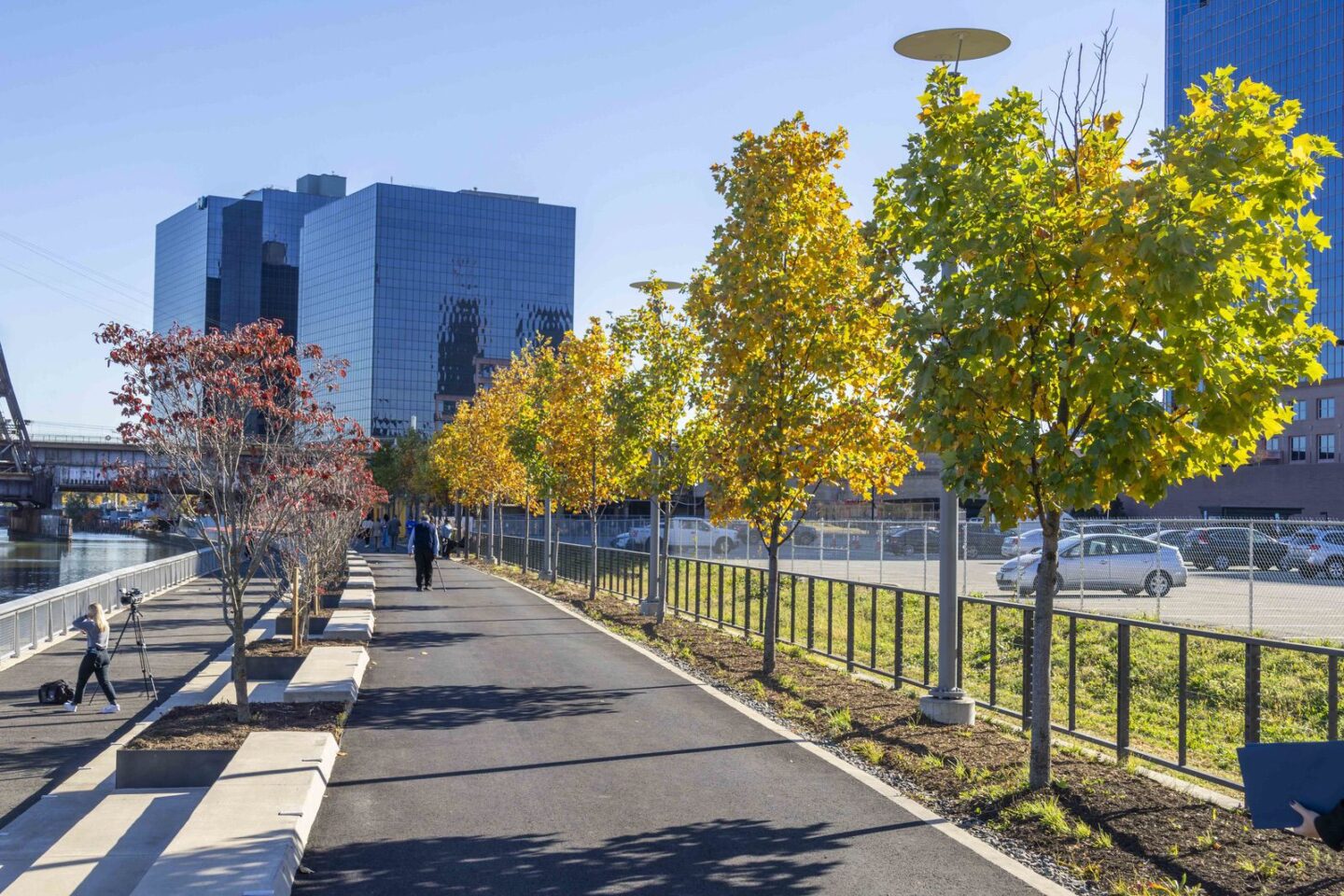
Nicknamed ‘The Notch’ because of a V-shape indentation along the riverbank, or Phase C, this is the third section of Newark’s riverfront that has been turned into recreation space and was achieved after a decade and $14 million.
Crowder pointed out the construction crane swiveling nearby, building the fourth floor of Boraie’s tower, the first to be built along the banks of the Passaic River. A short walk away, NJPAC marked the groundbreaking of a massive redevelopment project. The Notch will become an important tourist site for concertgoers as well as the neighborhood park for residents, new and old.
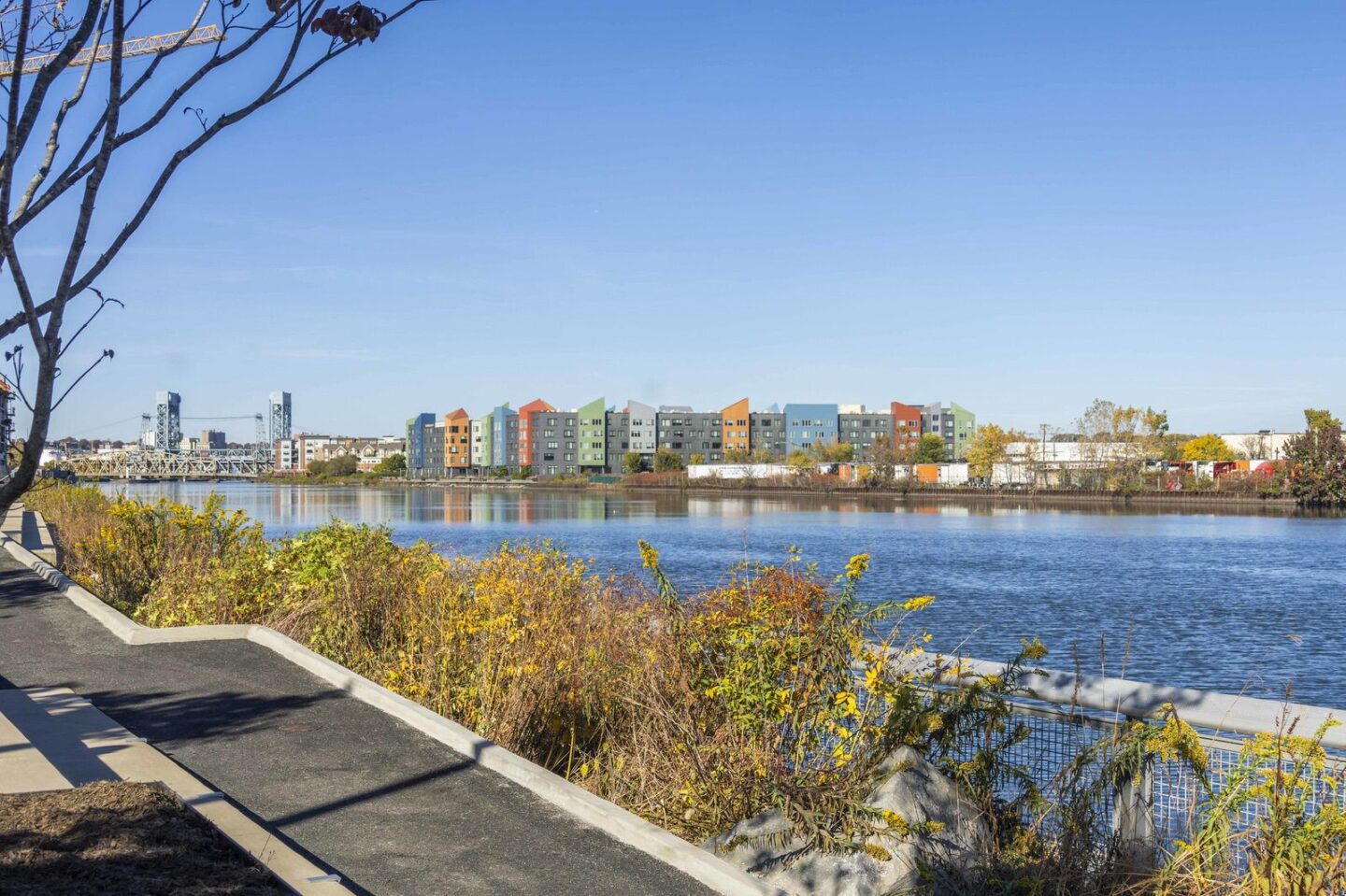
The Notch is particularly significant to Mayor Ras Baraka as it was designed and constructed entirely during his term as mayor. “The reality is, I was still on the municipal council when the first phase was finished in 2013,” Baraka said.
The project took about a decade to complete. In 2016, James Corner Field Operation, which also designed the High Line in Manhattan, was chosen to spearhead the project. But the project was put on pause about halfway through when the city changed contractors from Tomco to Flannigan Construction.
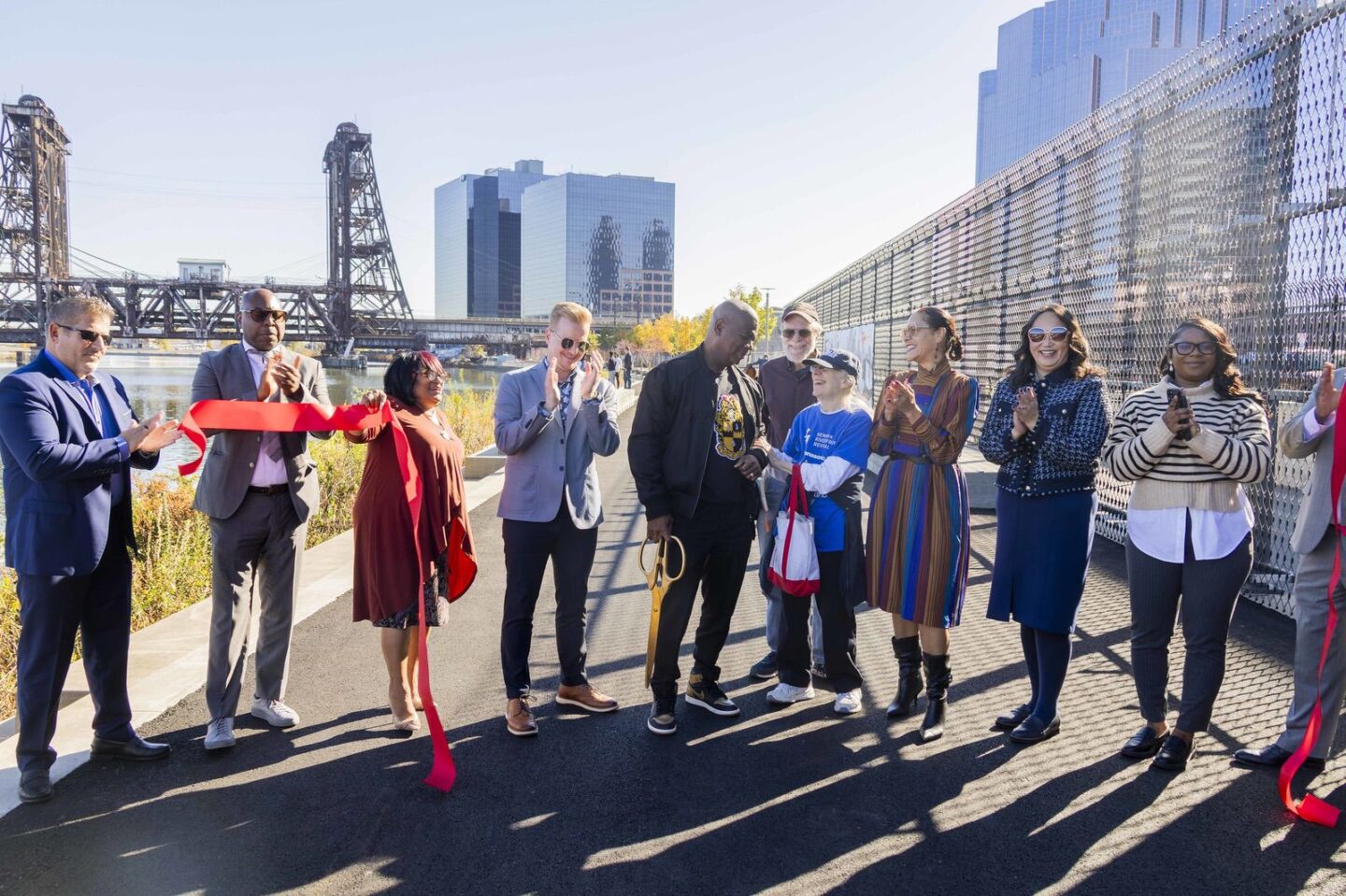
“Just to give you an idea of exactly what it took to bring all this together,” Crowder said. “Two construction companies, a design company, five city project managers.”
When Marcy DePina, executive director of Newark Riverfront Park, said this project was a “longtime” coming, she means it. Developing Newark’s riverfront has taken longer than Boston’s Big Dig project, and there are still three more sections that must be completed.

Although city officials have kicked around plans to redevelop the Passaic River since the Victorian era, the first time the Planning Department revealed a concrete proposal was in 1982. Working with Philadelphia firm Wallace, Roberts & Todd, the plan was unveiled during a public hearing at City Hall. This consulting firm was the same brains that designed Baltimore’s harbor, which was at the time a model for waterfront redevelopment.
Despite the unveiling of these plans, the riverfront development was never formalized into law, according to a Star-Ledger editorial in 2002. “The greatest threat to the proper development of the waterfront is that the city still has no official plan for it,” it read. “Without planning, ludicrous things happen.”
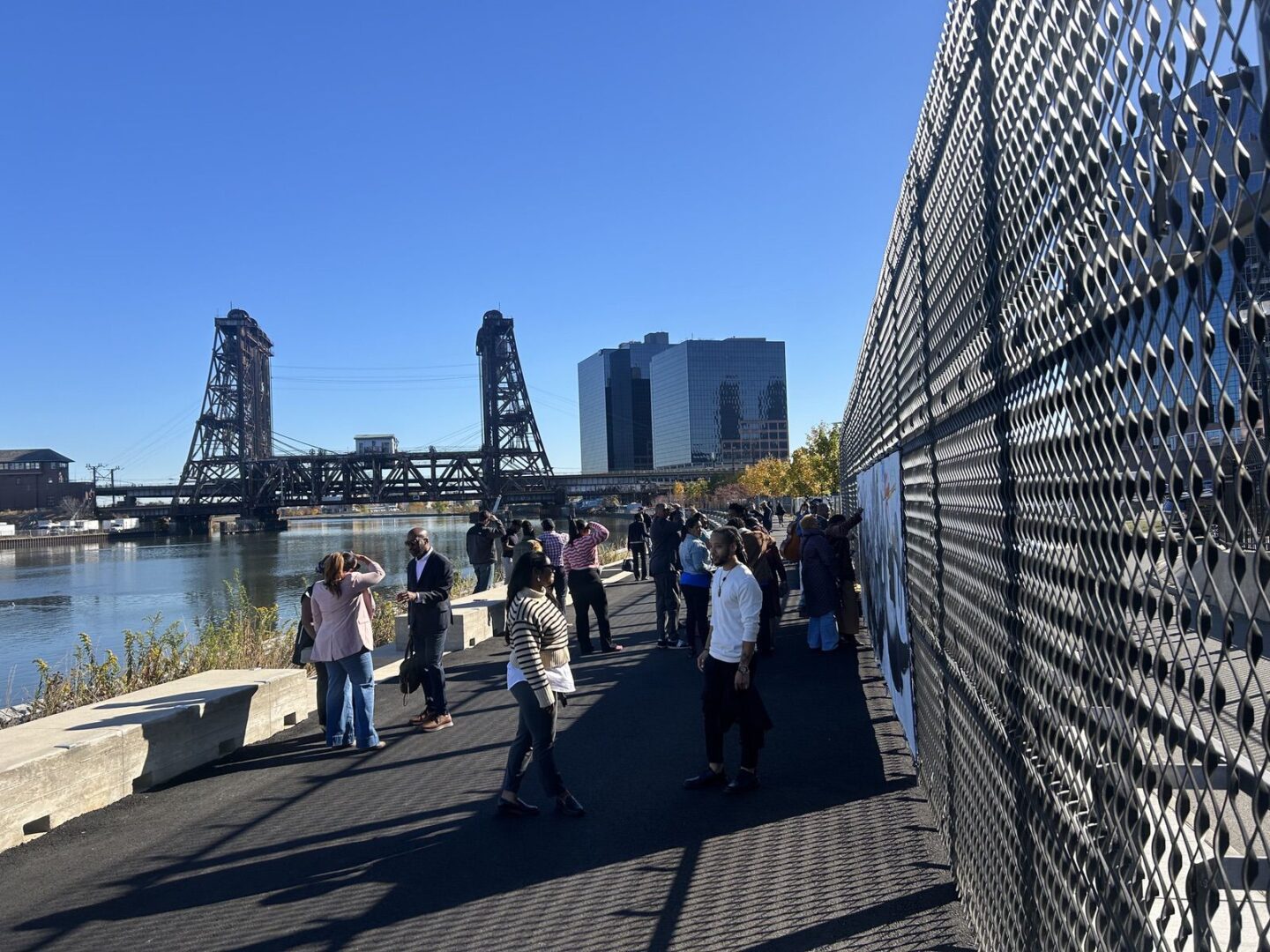
It wasn’t until 1999 that the U.S. Army Corps of Engineers broke ground on the first phase of the riverfront project. The first section opened in 2013, when Corey Booker, now a U.S. senator, was mayor. On the day the park opened, Adrian Benepe, a director of the Trust for Public Land, told the Star Ledger that 3,700 tons of contaminated soil had to be dug up for the project. Not only is the Passaic River contaminated, but the land on which the park is being built is also polluted by industries that used the waterway for transportation and sewage.
Phase C of the park isn’t perfect, but the city had to work with what it was given. Eking out this sliver of parkland and combining nine city lots turned out to be a considerable feat.
It is hard to ignore the presence of the FBI Building, which was built in 2003, that still seems out of place, according to Arnold Cohen, from Friends of Riverfront Park, who was present at the ribbon cutting.
The building is flanked by a 400-car parking lot and surrounded by a chain-link security fence and this is a visitor’s first hostile impression when approaching the park from Penn Station.
A massive black fence runs along a certain length of the riverfront park to block out the view of the building and its entrance to a parking garage. Cohen believes that the blame is on past generations of city leaders for lacking the foresight to preserve this land as open space.
“It was a giant mistake to allow the FBI building to be built,” Cohen said.
Still, the park Newarkers have today is commendable, Cohen said. It was a moving moment when Baraka called Cohen and his wife Nancy Zak up to join the city officials in the park’s ribbon cutting.
“It’s incredible to have any access to the water because the community for ages was cut off from the river,” Cohen said. “That’s what it was about when we first started.”
One thing the park does so well is showcase the historic Dock Bridge — nowhere can you get so close to this 1935 truss bridge, listed on the National Register, and listen to passing of trains rattling the steel beams. The Notch is also an important historic site — the place where Robert Treat first encountered the Lenni Lenape.
The next two sections of the riverfront park that the city will turn its attention to is are in the north — Phase A and B — before circling back to the final portion near the dock bridge and Penn Station. To remind the politicians who attended last week’s ribbon-cutting their promise to provide the future park with ample green space and recreation, Zak held up a symbolic green ribbon along with a pamphlet created by Friends of Riverfront Park.
“Every time we see a politician we have this in our hand,” Zak said.

